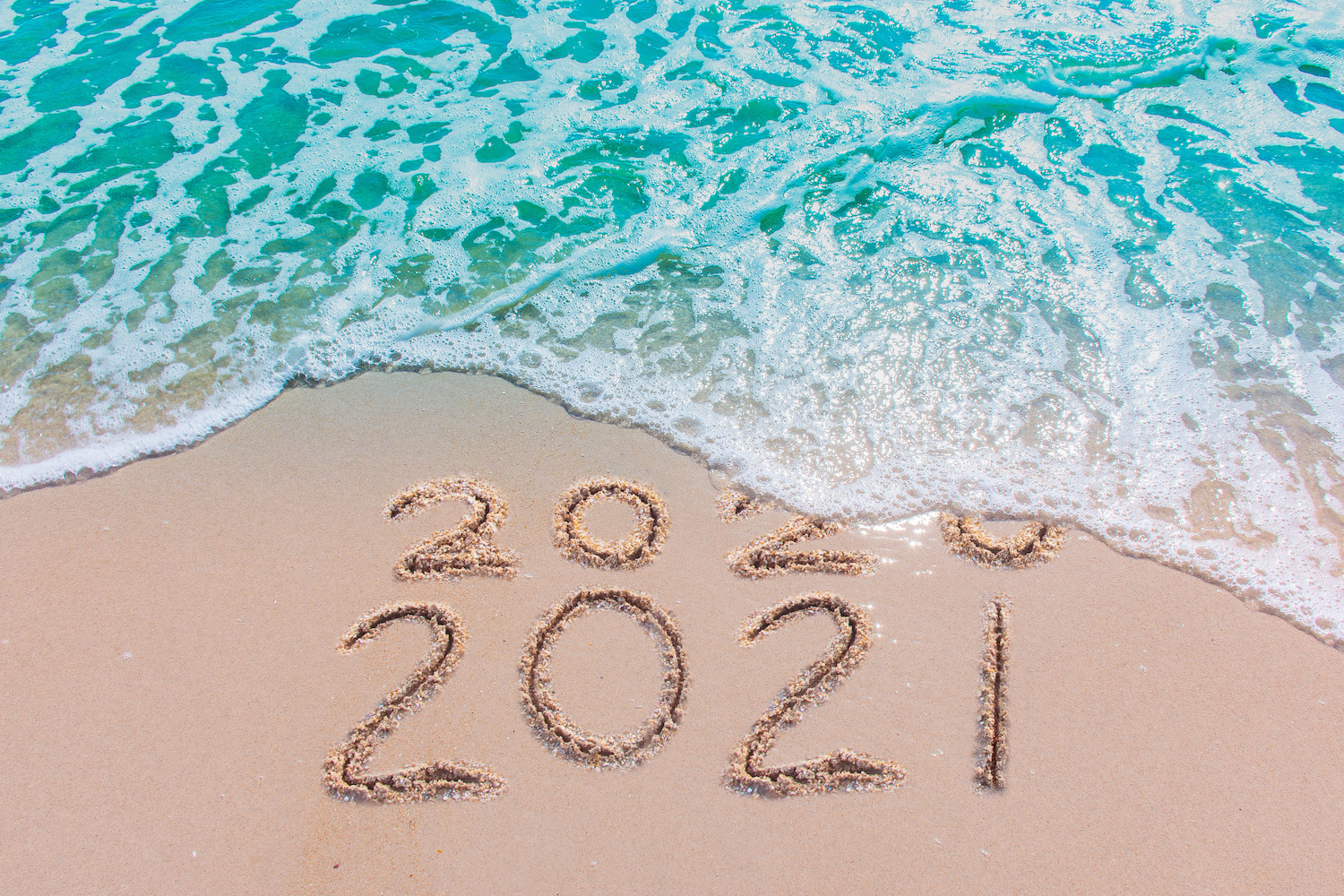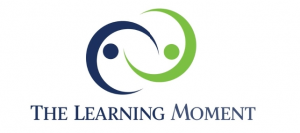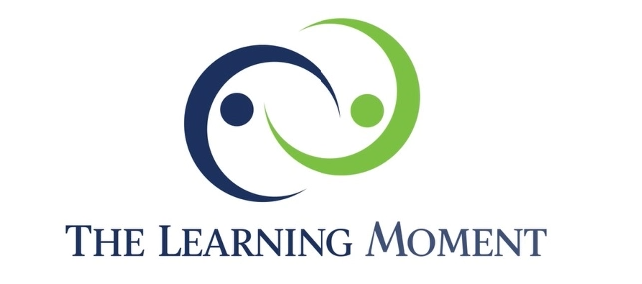As I’m writing this article, we’re closing out the first year of Covid-19; deep into February 2021. We had such high hopes for change by now. But schools are still closed to some degree or another. Expectations of vaccine efficacy have been questioned. The one-two shot was supposed to get us back to some kind of normal within a month or two. Well, Anthony Fauci is now predicting the Fall of 2021.
Recommendations for mask-wearing have been doubled – even in some cases tripled. (I think that three-mask idea is still said in jest. But it’s hard to tell anymore. Anyway, the jokes aren’t funny.) It was only six weeks ago – as of this writing – that all of us were looking forward to the turning of the calendar from 2020 to 2021, like that would be some magical dateline where 2020 would give up and hand over reins to 2021, saying, “Here, time to make it all better.” And 2021 just laughed.
The question must be asked: How are you liking 2021 so far? We had such high hopes for the new year, especially given the adverse circumstances we thought we were leaving in our rearview mirror. But now Facebook posts from ordinary individuals all over the world are including such messages as “hold my beer.” And there’s an updated Gary Larson cartoon featuring two burning buildings, one marked 2020, the other 2021. Firemen watch as a would-be rescuee from 2020 bounces off their trampoline and dives headlong into the flaming window in building 2021. (After all these decades of retirement, Larson sure picked up his pen again at just the right time, didn’t he? The Millennials and Gen Zers are in for a treat. A sardonic one, to be sure, but a treat just the same.)
I know. It seems like a weird time to be talking about gratitude right now, doesn’t it? “Counter-intuitive,” as they say in the impressive buzzword circles. In private conversations, friends talk about their gratitude journals. Some have just started one, in an attempt to take the edge of mounting anxiety. And build on what’s good in life. Others are into their 20th year, devotedly filling up one volume after another.
What might be in your personal journal? Family, of course. Premium coffee and tea that are still affordable? The travel coffee mug that you still use to keep your morning drink hot, even though your a.m. commute is bedroom to bathroom to home office (or dining room table)? A reasonably reliable paycheck? Streaming movies on demand? That Christmas cactus that miraculously came back to life, when the only reason that it didn’t end up in the garbage is because you just kept putting it off? Electricity? Access to a piano that doesn’t require electricity? A choice of vaccines? Seeing your name on the waiting list for the vaccine? Friends who disagree with you but love you anyway? Bedroom slippers and the fact that you can still attend Zoom meetings dressed for business from the waist up? The fact that you have cultivated the personal habit of never assuming that your video camera is off?
Gratitude also comes in the form of comparing what we have now with what we didn’t have in the past. It’s safe to say that most of the most senior executives today remember a time when they didn’t have Internet, and now they do. But, astoundingly, there are executives who remember a time when they didn’t have plumbing, and now they do. Or they grew up in violently dysfunctional families, and now their homelife is serene. Just comparing and contrasting between past and present gives us plenty of material to feel good about.
We are reminded by the gratitude experts that we benefit by cultivating gratitude for all aspects of our lives – things and events both large and small. Everyone has something to be grateful for. Even today, in these times of extreme anxiety and social divisiveness. So maybe it’s not so counterintuitive after all. Future generations who will one day have the good fortune to read today’s gratitude journals of their ancestors (who would be us right now) will be in for an eyeful. Hopefully, their own lives will have advanced so far in abundance, progress, and comfort (thanks in no small measure to the sacrifices we’re making today, by the way), that they’ll exhale a breath of gratitude that the quality of life characterized by 2020-2021 is long since gone.
So that’s a snapshot of our personal excursions into the gratitude experience. How can CEOs and other senior leaders leverage gratitude as a competitive advantage that sets the stage for future growth? Is it weird – maybe even bogus – for a CEO of a global company, like me, for instance, to look back on 2020 and consider what there might be to be grateful for on a grander scale than our personal notebooks destined to be reviewed by future generations? As someone who makes a point of handwriting thank-you notes to tribe members, I can tell you from first-hand experience that gratitude is actually an executive superpower. Not only in how he or she relates to tribe members, but also in how gratitude fosters expansive thinking and innovation. Gratitude is a personal experience.
But it is also supremely powerful on an organizational level. And it’s accessible. You need only to choose to apply the philosophy of gratitude as a corporate leadership perspective. In his foreword to the book Leading with Gratitude: Eight Leadership Practices for Extraordinary Business Results (by Chester Elton and Adrian Gostick), Marshall Goldsmith wrote: “Gratitude is a mental state that a) you can most easily decide to feel, b) has the most immediate effect on improving your well-being, and c) is going to have a remarkable impact on your ability to lead other people. The challenge is to remember to do it!”
These days, the real challenge is to remember to do it in the face of hard evidence that lures us in the direction of believing that there’s not much to be grateful for at all. Yes, 2020 was filled with some tragedy. There is no denying that. But most of us who are here today to even look back on 2020 to any degree can take up the leadership challenge and truly acknowledge that 2020 came with gifts.
(As I just wrote this line, I’m reminded of Phra Phuttha Maha Suwanna Patimakon, the gold Buddha statue in Bangkok, which was encased in stucco for centuries. At 5,500 kg, its immense value in gold had been hidden from marauders who only saw the stucco and dismissed it as worthless. What is the value of 2020 for you as a corporate leader? Or do you only see the stucco, the pain? The loss? The uncertainty? The anxiety?)
And so I sat down to think it through. What do I have to be grateful for from Year 2020, which will equip me and the WD-40 Company tribe to prevail through 2021 and beyond? Come what may? Here’s what I came up with:
Gratitude for Vicissitudes
Have you heard the story of the farmer and his dizzying round of episodes of bad luck and good luck? As with every story that has survived the centuries via the oral tradition, it has multiple versions. The one I will summarize here comes from Think Like a Monk: Train Your Mind for Peace and Purpose Every Day by Jay Shetty.
There was once a farmer whose horse ran away. Oh how unlucky, cried his brother. “Good thing, bad thing, who knows,” answered the farmer. (I’m thinking that maybe his wife might have had a different attitude about the whole episode, though. Just a gut feeling.)
Horse comes back, this time in the company of a mare. Oh how lucky, cries the brother. “Good thing. Bad thing. Who knows,” says the farmer.
Son tries to tame the mare, falls off, breaks his leg. Well, you can guess the rest.
Broken leg protects the son from being conscripted into the military.
Shetty sums up the story with the lesson, “Don’t judge the moment.”
When you’re the CEO who is responsible for being able to see around corners and make billion-dollar decisions accordingly, there are board members who won’t appreciate that line, “Good thing, bad thing, who knows?” They may or may not judge the moment, but they sure will judge you if you drew on that bit of wisdom and announced it during an earnings call.
And yet, as much as senior executives are counted on by thousands of people (employees, investors, customers, to start with) to make wise and right decisions, we make those decisions based on known knowns, as Donald Rumsfeld said when he described his approach to strategic planning. But even if we think we know the knowns, we are taken by surprise when the world is turned upside down like a snow globe. Our constituents may still look to us to make the right decisions given the changed sets of circumstances. But we know better than anyone that good news and bad news often switch identities before they present themselves to us.
Don’t do what the farmer did – taking the flood of ups and downs in passive stride. People who count on your active optimism and resilience would prefer a more energetic, proactive approach to the known unknowns. But you can still be grateful for the unknowable unknowns, holding the posture that it’s not the circumstance that will make all the difference at the end of the day, but the way you decide to respond to it. You’ll be in for a surprise, to be sure. With deft handling of your reactions to the unknowables, there is sure to be a benefit hidden in that room full of question marks.
Which, of course, reminds me of the punch line to one of my favorite stories: “There’s a pony in there somewhere!” said the optimistic boy, joyful at the sight of his room filled with horse manure.
Gratitude for Purpose
I don’t especially enjoy talking about myself (I’d rather tell you about how wonderful the WD-40 Company tribe is). But one of my favorite stories I like to tell is the one in which I discovered my purpose. As these things happen – like finding love or happiness – discovering my purpose happened in a single moment when I was least expecting it. I was in the air, flying over the South Pacific from California to Australia, filling up the hours by reading the Dalai Lama. Then I read these words, “The purpose of life is to make people happy. If you can’t make them happy, at least don’t hurt them.” From that moment, my role as a leader clarified, and this purpose became my North Star in every decision I make.
(What does happy mean, from the perspective of the CEO’s relationship to the tribe? Good question. We’ll get to that in an upcoming article. But for the moment, I’d like to offer the perspective that to be a CEO whose purpose is to make people happy is a servant leadership stance. But happy, if thoughtlessly taken to extremes, can diminish a CEO from servant to servile. This is not an, “Everybody gets a pony!” proposition. The CEO is tasked with making tough choices that affect the day-to-day life experience of all the tribe members. From the tribe members’ perspective, the experience of happy must be drawn from doing work that is meaningful to them, in a culture that they can depend on to be consistent and reasonably predictable, with fellow tribe members whom they trust, in a way that’s consistent with the company’s values. Not everyone will be happy with the way their day plays out. But over time, from the big picture perspective, when the CEO does it reasonably right, the tribe can trust that all decisions are made for the greater good, for now and for the future. And that is a grand purpose right there.)
That commitment helped me through 2020 when I was working through decisions on keeping the company on track for our identified mission, regardless of external circumstances. It also kept my passion alive in conditions that might have otherwise depleted my energy, creativity, and faith in the future. If I wake up every morning thinking about selling oil, I would lose my passion and momentum. I get up every day reflecting on what Barry Wehmiller Chairman and CEO Bob Chapman says, “Everybody who comes to work is someone’s precious child.” (Or, of course, someone’s precious parent.)
During 2020 I agonized over the fear of potentially having to let people go. I have a responsibility, even a relationship, with everyone who works at WD-40 Company. If we bring a new member into the tribe, we have to be confident that we can sustain our new tribe member. While I can’t responsibly say that we will never lay anyone off, I can say that since October 7, 1997, the day I was honored with the opportunity to lead our tribe, we have never laid anyone off due to any financial crisis.
In the early days of Covid, it was the intensity of the uncertainty that kept me awake at night. I chose to take a pragmatic, optimistic approach – an optimism based on a level of understanding that was at least viable and acceptable. From that position, I’ve been able to serve the company as well as our tribe. I am able to live my purpose.
Gratitude for Our Company Values
I mentioned values above as I was expanding on how I activate my purpose on a daily basis with my tribe. From the tribe’s perspective, decisions and behaviors are examples of our values in action. These examples show us what the values look like as they play out daily. They also accumulate to ultimately create our culture. The more we behave and makes decisions according to our values, the more our culture is created in a dependable, consistent way. Which ultimately frees up our tribe members to invest their intellectual and emotional energies into creating a company culture that is literally friction-free. I’ve simplified this concept in the following formula:
Culture = (Values + Behavior) x Consistency
Our company values are the guardrails of our culture. With the guardrails in place, we can move forward as freely as we desire, without the friction, drag, and anxiety that come from confusion when we don’t know what’s expected of us. Enhancing my own personal purpose is the Number One Value of our company, which is, “We value doing the right thing.” What was the right thing from Day One of our Covid-19 adventure? To take care of the safety and well-being of the tribe.
After that, our values go in this order:
“We value creating positive, lasting memories in all of our relationships.”
“We value making it better than it is today.”
“We value succeeding as a tribe while excelling as individuals.”
“We value owning it and passionately acting on it.”
“We value sustaining the WD-40 Company economy.”
I don’t even worry about manifesting the last value, because if we all take ownership of doing the right thing by our fellow tribe members in accordance with Values One through Five, the sixth value will naturally unfold, even in a global economy ravaged by Covid-19. We never strayed from our values and we were rewarded by the realization of our value of sustaining the WD-40 Company economy.
Gratitude for Our Collaborative Culture

A few months ago, I was leading a highly productive, congenial global zoom meeting that went smoothly, leavened with laughter. On a whim, at the end of the meeting I asked the participants to contribute a single word each thought best described their experience of the meeting. Once we plugged all the words into one of those word cloud programs, this is the word that stood out beyond all the others: Collaboration.
That pleased me no end. Here we were, all alone, altogether, all around the world, after months of very strange isolation. And yet we were still able to achieve the joyful mind-meld that is the result of years of consistent, trusting allegiance to each other.
Our last engagement survey showed that 98% of our employees love to tell people that they work for WD-40 Company. I have no doubt that they are as proud of our products as I am. And that we are all very much aware of the many ways that what we do and make create a better life for millions of people around the globe. But I am also very certain that we make life better for our WD-40 Company tribe by our consistent culture of open, trusting, friction-free sharing of information and ideas throughout the organization, up and down the ranks, all around the planet.
Gratitude for Data Points
“A few more steps and we’ll be safe in the Fire Swamp!”
“We’ll never survive!”
“Nonsense. You’re only saying that because no one ever has.”
Fans of the epic Rob Reiner film, The Princess Bride, will recognize those lines instantly. It’s an exchange between Princess Buttercup and her hero Westley (traveling incognito as the Dread Pirate Roberts). Into the Fire Swamp they run, escaping the pursuit of the evil prince who wants to marry her (or, as Princess Bride geeks would say, mawwy). Inside the swamp, they quickly discover its three dangers: fire spurts; lightning sand; and the dreaded Rodents of Unusual Size (ROUS’s, for those in the know). Instead of allowing these hazards to demoralize them utterly (which would have been entirely understandable), Westley and Buttercup rationally made note of them, what signaled their presence, and kept moving through the swamp. Granted, some scratches, some blood, a lot of sand, and a burned hem – but they prevailed.
What was the secret to their survival? As life-threatening as those three dangers were, Westley and Buttercup coolly took in the data points, without allowing their perilous situation to define their destiny and pull down their spirits.
The year 2020 was our Fire Swamp throughout the world. The hazardous journey inarguably threatened – and, in some cases, destroyed – the health and prospects of businesses that deserved to be here today. There is no diminishing or ignoring the tragedy and the devastation suffered by hundreds of thousands of enterprises that were healthy in December 2019.
But those of us who made it all the way through emerged with an understanding of our own landscape of hazards that will stay with us into the future, unless we coolly acknowledge their existence and address them now. An underserved market? A product line that has outlived its relevance to its customers? Labor issues that must be resolved quickly? A supply chain that depends way too much on the good will of a single nation? All these hazards are easily padded over, ignored, hidden, and underappreciated when times are good. But when you’re running for your life through the Fire Swamp of bad times, that’s when their negative impact will have dimensions of “unusual size.”
How is it possible to be grateful for the Fire Swamp of 2020, when we’re surrounded by the ashes of businesses that deserved to still be here with us? Our reduced circumstances and focus revealed to all of us the unique set of data points that showed us where our own particular hazards were, where to step, what to avoid, what to fix, what to create to be responsive to our new future. We only had to pay attention, take note, and take action to the data points.
Gratitude for Being Forced Off Our Esses

There’s a phrase going around these days that goes like this:
Soft times make soft people; soft people make hard times; hard times make hard people; hard people make soft times.
This is another way of describing the S curve (or growth curve) that Whitney Johnson describes in her book, Disrupt Yourself: Putting the Power of Disruptive Innovation to Work (which is one of my favorites, by the way). While she initially describes the growth curve in the context of some kind of innovation in the market space that causes extreme disruption, the growth curve can also depict what happens to us and our business model when caught by surprise by an upheaval. Imagine a capital S with a very long upward line. At the bottom and top of that long vertical line are two horizontal lines – very much like a serif S that you can see anywhere. Those flat lines represent plateaus of rest, recovery, and sometimes just living life day-by-day, doing what you’ve always done. You’re comfortable but your development isn’t anything to write home about. Then suddenly, zoom! Upward you go again! Disruption!
“Part of the reason disruption can be so hard to spot is the timing; the growth curve can look totally flat for years, then spike upward very steeply,” she wrote. “As the pace of disruptive innovation quickens and you are in the midst of a crashing wave, what is unsettling can also be an amazing ride. Disrupting yourself is critical to avoiding stagnation [and] being overtaken…and fast-tracking your personal and career growth.”
The year 2020 roared us up the steep incline of the S-curve, and it was a harrowing ride, to say the least. My hope for you is that your steep ride has ceased, at least for the immediate time being so you can catch your breath. Ideally, you’re on the next level plateau, holding on for a moment, letting your adrenaline levels return to normal. But the ride’s not done. Year 2021 will send you zooming up the next incline. While you’re gathering your wits about you right now, reflect on the experience that 2020 gave you and be grateful for the last ride. It will give you confidence that you will survive the next innovation – or upheaval – and arrive at new heights as a reward. While that experience isn’t guaranteed to be a beneficial thing, a philosophy of gratitude will improve your odds of a more positive, expansive outcome, with new possibilities that you might have overlooked before.
Gratitude for Grace
Back in January 2020, before the Covid-19 news fully came crashing down on the globe, the planet was on the move. Front doors were opening, closing, opening again as parents went to work and kids rushed off to school in the morning. Car engines fired up in the frosty mornings. In many parts of the world, impatient commuters cursed under their breath as they discovered that they had to scrape the windshields before they could get a move-on. People sprinted down concourses for their flights – reluctantly passing the coffee stands. And traffic control screens were crammed with those silhouettes of planes, often overlapping, on their way somewhere essential to the people onboard.
Then in the span of just a couple of days, front doors opened one last time, closed again, and stayed closed. Flight reservations were cancelled. Flights were cancelled. And one by one those little airplane silhouettes disappeared from the air traffic control screens. The screens were empty. The streets were empty. The office buildings were empty. The homes were full of people looking at each other and wondering, “What do we do now?”
A year has passed and we’re slowly cranking up the machine again. And, much to our surprise, we’re making mistakes in activities we used to do so much we did them unconsciously. It’s like learning to walk again. Muscles and coordination we used to take for granted, we have to patiently re-educate ourselves to use again. That’s a strange and unexpected upward climb of a growth curve we didn’t expect to see.
Whitney Johnson tells this story in an exclusive interview for this piece:
“I think about moving into 2021 as an experiment, instead of putting pressure on myself to get it right. We’re just learning all over again. When you take your ego out of it, it makes all the difference.
“A couple of weeks ago I had to travel again after having not traveled in eight months. Because I hadn’t traveled in so long, my basic system was out of practice. And I was well into my trip when I realized I had forgotten my watch charger and critical clothing. This is rookie-level inefficiency, not something that someone who travels as much as I do would do.
“I had to stop and remind myself not to get angry at myself, and I’m not going to get angry at anyone else. I would use this as an opportunity to practice resilience. I’m a really goal-oriented person and not having my watch to track and record my physical activity was really frustrating. Especially since I was about to close in on a milestone. But I resolved to not go to the Apple store to get a replacement charger. And I wasn’t going to buy new clothes. I would practice resilience and self-compassion. And just make do with what I had.
“Was it messy? Yes. Inconvenient? Sure. Frustrating? Could have been. But really, those things we could automatically depend on and plan for last year just aren’t in the picture anymore. At least not in the way they used to be.
“Going into 2021, we have to give ourselves a lot of grace, make room for experimentation, and disorderliness and distraction. Two years ago we might have been mortified if a small child was disrupting our Zoom call. Now, well, it’s just the way it is.”
Gratitude for the Companionship on This Crazy Ride
Chester Elton, one of the authors of Leading With Gratitude, says, “Being a CEO who is able to look at this array of realities for good and for ill, and still find an upside to the story, that’s the ideal. This is how leaders can form a tribal culture where the members can at least find stability in the shared philosophy that, ‘Okay, we’re all in this together.’ There can be good that will come out of this.
“No, let me rephrase that. We’re all in this together and isn’t this exciting?”
As we learn more and more about the psychological benefits of gratitude in the way they help us expand possibilities in our own lives and careers, in our employees’ lives and careers, to our companies’ performance in the global market, we become more and more motivated to notice, appreciate and give grace for the mess wherever we can. So let’s get started expanding our gratitude practice.
Right about here is where I normally type, “No time like the present.” But not this time. No time like the past.
Like 2020.

READY TO GET STARTED?
Get in touch
Send a message with any questions you might have about reaching your workplace goals.


